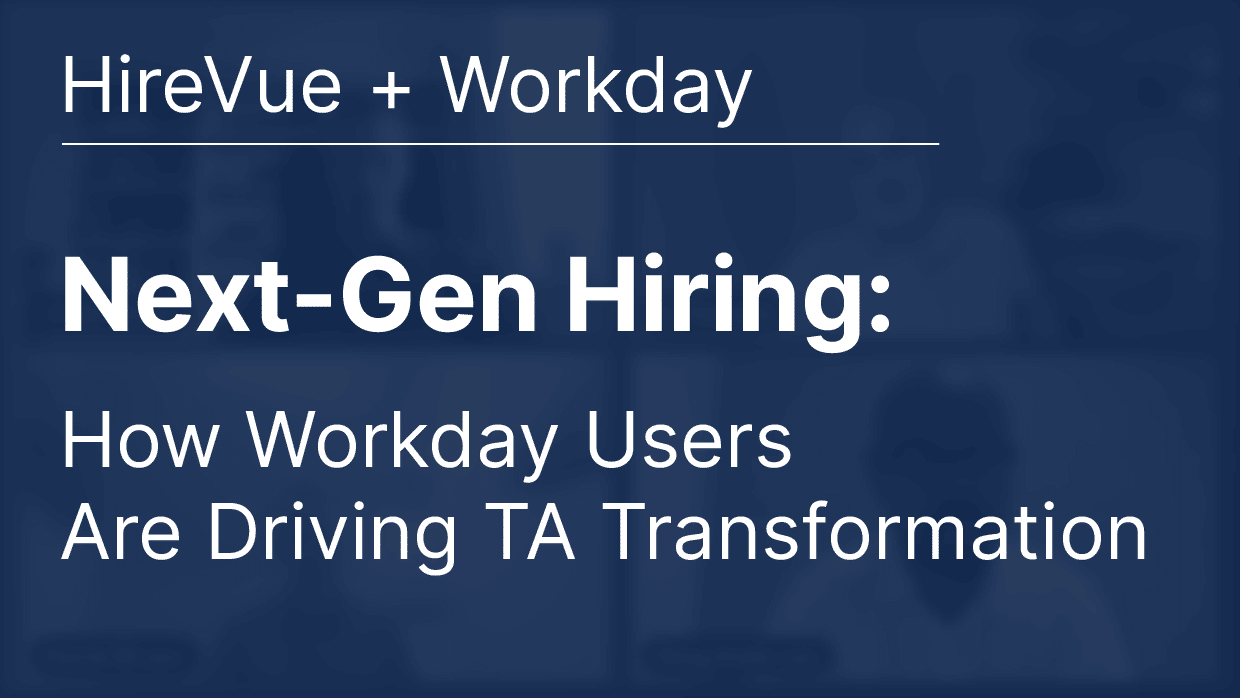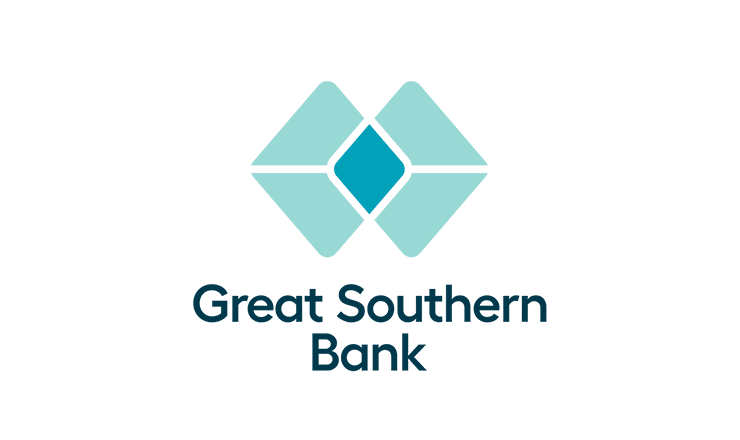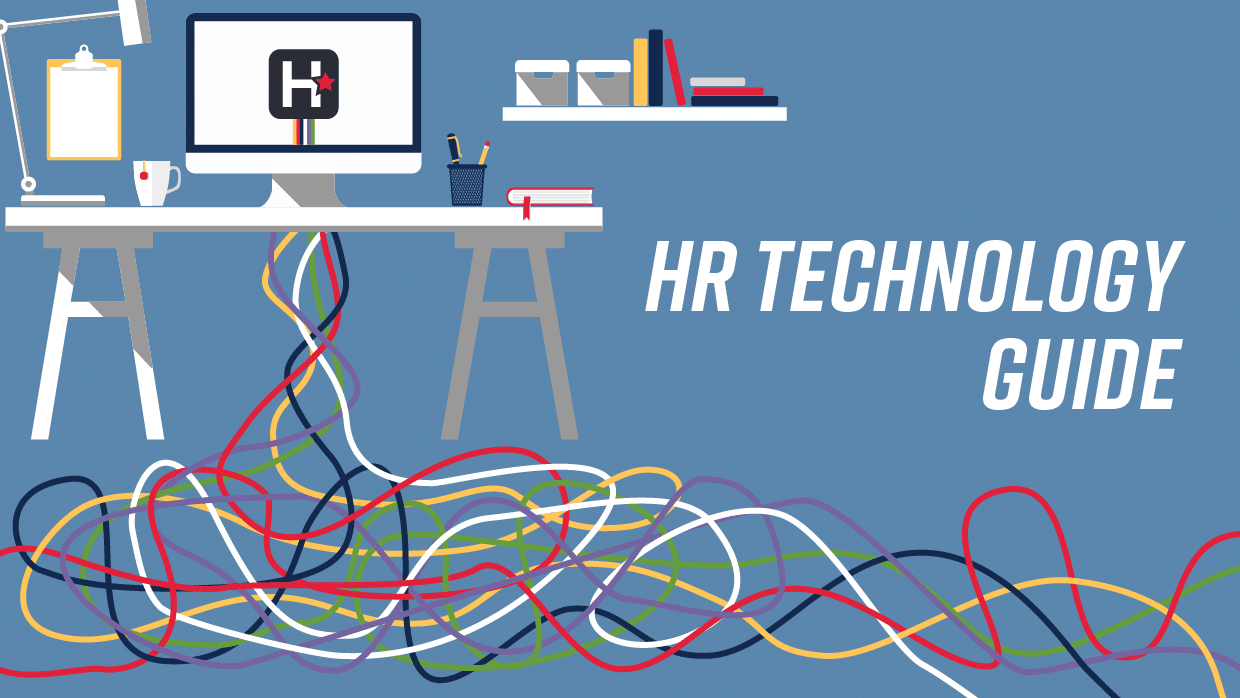Next-gen recruiting transforms talent acquisition

HireVue and Workday recently came together for a LinkedIn Live broadcast to reveal insights from hundreds of Workday users on how they are innovating to secure the best talent. We were also joined by a panel of TA industry leaders from one HireVue customer and Whitecrow Research who shared their own learnings when using next-gen recruiting to transform talent acquisition.
Faster fill rates, better candidate experience and reduced admin burden were just a few of the big topics that we unpacked from the report and put to our panel of experts. In this blog, we’ve summarized the key takeaways shared by our panel of TA practitioners so that you can start applying them to your own TA transformation projects.
Balance efficiency with candidate experience
Ed Gunzeln from Whitecrow Research said; “Automation allows you to build a more standardised or global process, removing admin burden and potentially generating cost savings by not having to schedule and reschedule in-person interviews. It also ensures that things get done and allows you to have all of your data in one place, which hugely benefits both HRIS and recruiters. But it’s important to take small steps. You don’t need to capture all candidate information at the start. Asking for small pieces of information, while a candidate is waiting for an interview or to be screened, will help maintain engagement. Speed, transparency and personalisation has always been my mantra for candidate experience.”
Barrie Brown, Talent Acquisition Manager – Country and Commercial.
Greg Anderson, Principal Product Marketing Manager, Recruitment and Talent, Workday, said; “I think it’s also important to consider how you customise the experience when operating across multiple countries. It’s a good opportunity to look at which steps you need in each country, what candidate information to ask for and when is the most appropriate time to ask for it—ultimately helping you speed up the process and avoid drop-offs.”
The movement towards skills-based hiring
Brown also added, “We’re certainly moving towards skills-based hiring as an organisation. It allows us to identify the skills we need to hire for the future and build longevity in the workforce. We’re able to better support internal mobility and link our attraction strategy closer to what the long term needs of the business are—as opposed to just hiring someone for today and hoping that they become future managers or leaders.”
Anderson emphasized, “Organisations are fundamentally restructuring how they work. They are stepping back to see what skills they have, what they need now and in the future, and then identifying the gaps. Once you know where the organisation is moving, you can then figure out how your hiring can reflect and support that. Then, rather than employees having a linear career pathway, you can start to see where skills can be redeployed across the business. A skills-based approach will also help companies build bigger talent pipelines and then prioritise the talent in that pipeline.”
Using AI to create opportunity – not just efficiency
Anderson added, “Using AI to create opportunity is a really big thing for us. It’s not just about efficiency. It’s about connecting candidates to more opportunities using technology—and in a way that supports their growth. We approach it in a way that is thoughtful, ethical and which solves foundational problems—and not making decisions in place of humans.”
Gunzeln emphasized, “AI can be a bit of an umbrella term and black box for TA leaders, so when bringing stakeholders on the journey with you it’s about breaking it down by use case. It’s best to start with a small one where the application of AI is most relevant. You should clearly communicate the value of it to the business, and not just by the dollar value. For example, it might be helping with internal mobility or helping to remove a bottleneck. I would do small steps, learn, and then move it forward. Make sure you clearly define the goal or KPI for your pilot project, aligned to a wider company goal, so that you can objectively measure its success.”
Pro tips for using next-gen hiring tools in 2023
Anderson said; “Make sure you have a very clear use case for how you want to use the technology—and then make sure the integration is high quality. Recruiting has been on a long march to become more data driven, so make sure you select the right tools to enable you to make informed decisions and iterate your process.”
Brown added, “Make sure that you have a clear end goal in mind at all times and think about what core business objective it aligns to. It’s very easy to get distracted by new technologies with lots of bells and whistles, so make sure you keep bringing the conversation back to the original problem that you’re trying to solve.”
Gunzeln said, “Start small, show what the technology can do and then scale it up. Also, look at it from a wider perspective than just TA. Consider things like total talent strategy, including internal, external, and contingent—so mobility as a whole. If you don’t look at how technology can help join up and support all of these areas, then that will be a lost opportunity.”
To watch the full recording of the LinkedIn Live broadcast, “Next-Gen Hiring: How Workday Users Are Driving TA Transformation,” just click here. You can find out more about this HireVue customer’s TA transformation journey.



